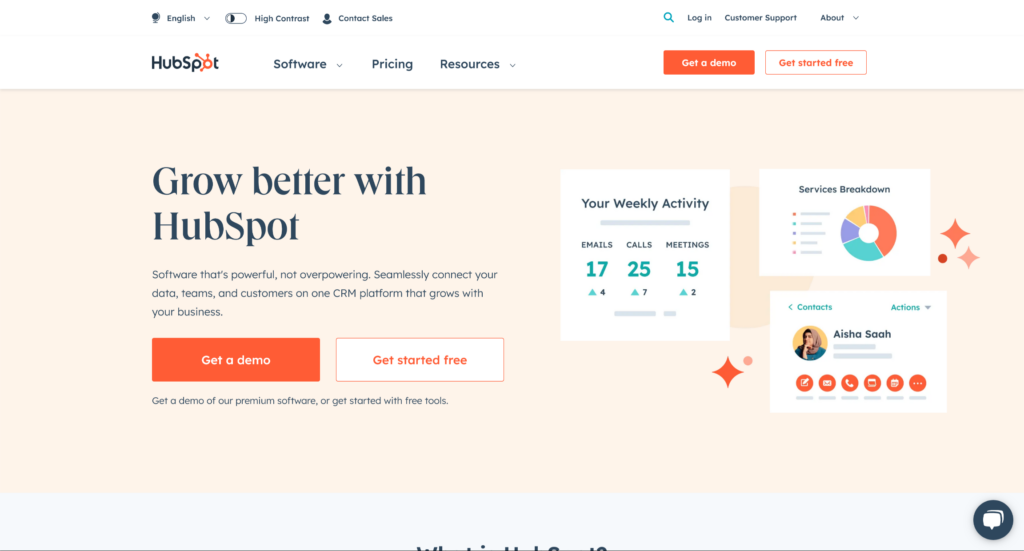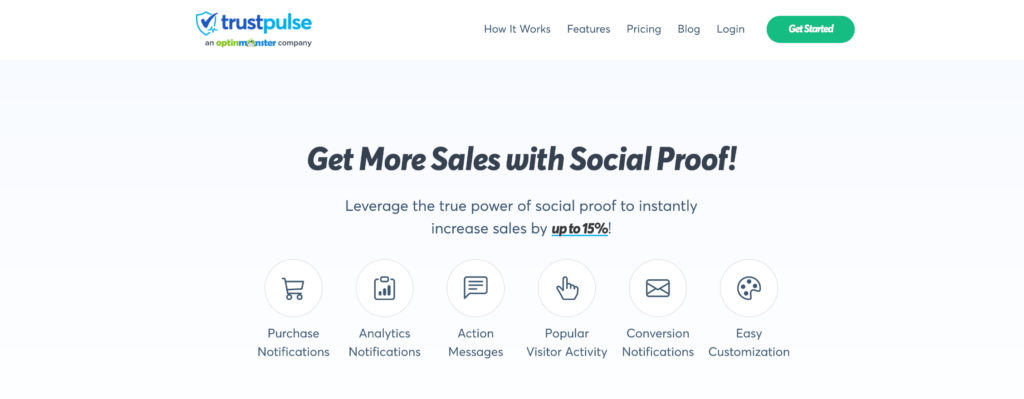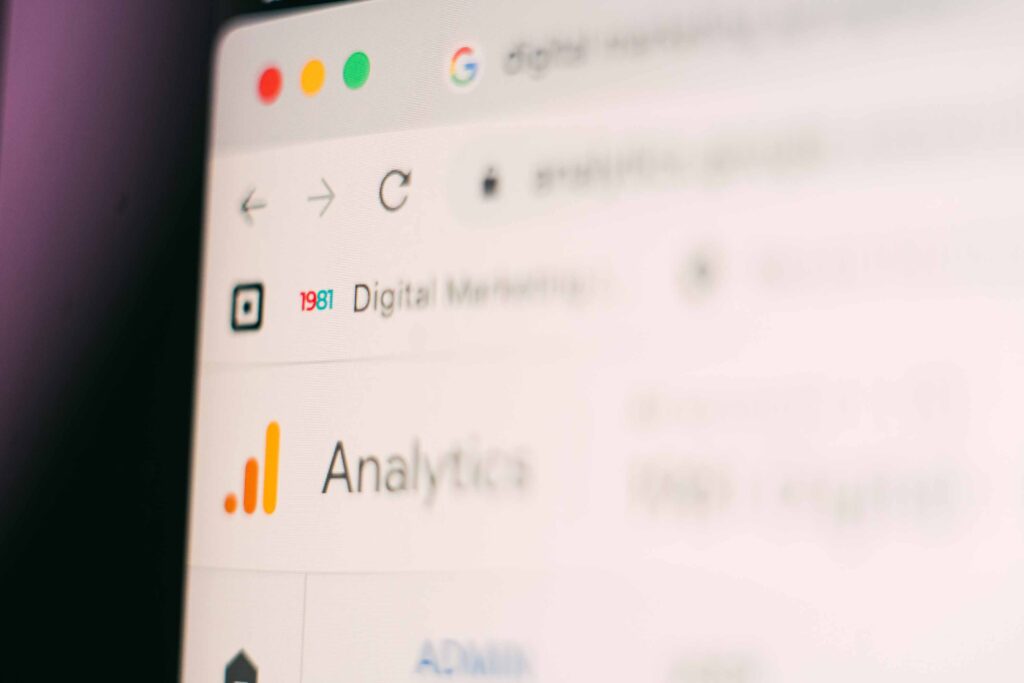A landing page is a crucial element of any successful digital marketing campaign. It serves as the entry point for visitors and plays a significant role in driving conversions. An effective landing page is designed with a clear goal in mind and optimized to capture and engage the target audience. In this blog post, we will explore the key elements that contribute to the effectiveness of a landing page and help you maximize conversions on your website.
What is a Landing Page?
A landing page is a standalone web page designed specifically for a marketing or advertising campaign with the goal of converting visitors into leads or customers. It is carefully crafted to provide a focused and persuasive message that encourages visitors to take a specific action, such as making a purchase, subscribing to a newsletter, or filling out a form. An effective landing page typically includes key elements such as a clear and compelling headline, concise and persuasive copy, a visually appealing design, a prominent call-to-action (CTA), trust indicators (such as testimonials or customer reviews), and a form or other method for capturing visitor information. The main purpose of a landing page is to maximize conversions by minimizing distractions and guiding visitors towards the desired action.
Understanding the Importance of Landing Pages
Landing pages serve a specific purpose in the conversion process. They are designed to focus the attention of visitors and guide them towards a desired action, such as making a purchase, subscribing to a newsletter, or filling out a form. Unlike other website pages, landing pages are created with a singular goal and are free from distractions that may lead visitors away from the intended conversion path.
Defining the Goal of Your Landing Page
Before creating a landing page, it is crucial to define its goal. What action do you want your visitors to take? Clearly defining your conversion goal will help shape the content, design, and overall structure of your landing page. Whether it’s driving sales, generating leads, or increasing sign-ups, a well-defined goal will guide your decision-making process throughout the landing page creation.
Top 5 tools for Effective Landing page conversions

- HubSpot: HubSpot offers a comprehensive suite of marketing tools, including a powerful landing page builder, lead capture forms, and lead nurturing features. With its integrated CRM and marketing automation capabilities, HubSpot helps businesses optimize their entire conversion funnel, from attracting visitors to closing sales.
- Unbounce: Unbounce is a popular landing page builder that enables businesses to create high-converting landing pages without coding knowledge. It offers a drag-and-drop interface, A/B testing, and integrations with other marketing tools, making it easy to design and optimize landing pages for maximum conversions.
- Optimizely: Optimizely is a leading experimentation platform that helps businesses optimize their website for better conversions. It offers A/B testing, multivariate testing, and personalization features to identify the most effective design, content, and user experience elements that drive conversions.
- Instapage: Instapage is a powerful landing page platform that offers drag-and-drop functionality, customizable templates, and advanced optimization features. It includes features like A/B testing, heatmaps, analytics, and integrations with popular marketing tools to maximize conversions.
- Leadpages: Leadpages is a user-friendly landing page builder that provides a wide selection of mobile-responsive templates and customization options. It offers features such as A/B testing, conversion tracking, and lead capture forms to drive higher conversion rates.
Crafting a Compelling Headline
The headline is the first thing visitors see when they land on your page. It should be attention-grabbing, concise, and clearly communicate the value proposition or offer. A compelling headline captures the interest of visitors and encourages them to continue reading and exploring what your landing page has to offer.
Creating an Engaging Call-to-Action
A strong and persuasive call-to-action (CTA) is essential for driving conversions. Your CTA should be prominently displayed, visually appealing, and use action-oriented language that clearly communicates the desired action. It should stand out from the rest of the page and provide a clear next step for visitors to take.
Designing a Clean and Intuitive Layout
The layout of your landing page should be clean, organized, and easy to navigate. Use whitespace effectively to create a visually appealing and uncluttered design. Place important elements, such as headlines, subheadings, and CTAs, in prominent positions to ensure they capture visitors’ attention.
Optimizing for Mobile Responsiveness
With the increasing use of mobile devices, it is crucial to optimize your landing page for mobile responsiveness. Ensure that your landing page is fully functional and visually appealing on different screen sizes. Responsive design will provide a seamless user experience and prevent potential conversion drop-offs.
Writing Persuasive and Relevant Copy
The copy on your landing page should be persuasive, concise, and relevant to your target audience. Clearly communicate the benefits of your product or service and address visitors’ pain points. Use persuasive language and highlight key selling points to convince visitors to take the desired action.
Top Writing tools
- Grammarly: Grammarly is one of the most popular writing and content creation tools available. It offers grammar and spelling checks, as well as advanced writing suggestions to improve clarity, conciseness, and overall readability. Grammarly’s user-friendly interface, accuracy, and extensive writing style recommendations make it a go-to tool for writers, professionals, and students.
- Hemingway Editor: Hemingway Editor is a unique tool that focuses on improving the readability and clarity of your writing. It highlights complex sentences, suggests simpler alternatives, and points out instances of passive voice and excessive adverbs. Hemingway Editor helps users create concise and engaging content.
- ProWritingAid: ProWritingAid is a comprehensive writing tool that analyzes your writing for grammar, style, readability, and more. It offers detailed reports, suggestions for improvement, and writing insights to enhance your overall writing quality. ProWritingAid is favored by many writers for its in-depth analysis and extensive writing feedback.
- Ginger: Ginger is an AI-powered writing assistant that offers grammar and spelling checks, sentence rephrasing, and translation capabilities. Its contextual suggestions and personalized learning make it a great choice for non-native English speakers.
- Reverso: Reverso offers translation, grammar, and spelling checks, making it ideal for writers dealing with multilingual content. Its context-based suggestions help writers maintain accuracy and fluency in their writing.
Incorporating High-Quality Visuals
Visual elements, such as images and videos, can greatly enhance the effectiveness of your landing page. Use high-quality visuals that are relevant to your offering and support your messaging. Visuals should capture attention, convey information, and evoke emotions that resonate with your target audience.
Implementing Social Proof and Testimonials
Social proof, such as customer testimonials, reviews, and endorsements, can significantly boost the credibility of your landing page. Incorporate testimonials that highlight positive experiences and showcase the value and trustworthiness of your product or service. Social proof helps build trust and confidence, encouraging visitors to convert.
Top 5 Social Proof tools

- TrustPulse: TrustPulse is a powerful social proof tool that displays real-time customer activity notifications on your website. It shows notifications such as recent purchases, sign-ups, and reviews, which create a sense of trust and urgency for your visitors.
- Trustpilot: Trustpilot is one of the leading social proof platforms that allows businesses to collect and display customer reviews. It offers a robust review management system, advanced analytics, and integrations with popular e-commerce platforms. Trustpilot is known for its credibility and trustworthiness, making it a trusted source of social proof for consumers.
- UseProof: UseProof is a versatile social proof tool that enables businesses to display recent sign-ups, purchases, and other website activity to build credibility. It offers a variety of notification types, customization options, and integrations with popular platforms. UseProof focuses on providing real-time, dynamic social proof to increase conversion rates.
- Fomo: Fomo is a social proof marketing platform that creates real-time notifications to display recent customer activity on your website. It leverages the concept of fear of missing out (FOMO) to drive conversions. Fomo integrates with various e-commerce platforms and provides customizable notification templates, targeting options, and analytics.
- ProveSource: ProveSource is a social proof platform that offers a range of notification types, including recent activity, live visitor count, and customer testimonials. It provides customization options, advanced targeting rules, and analytics to optimize the social proof display. ProveSource is known for its ease of use and flexible pricing plans.
Adding Trust Indicators and Security Features
To alleviate any concerns visitors may have regarding the security and legitimacy of your landing page, include trust indicators and security features. This may include displaying trust seals, certifications, or secure payment icons. These elements help establish credibility and create a sense of trust, leading to higher conversion rates.
A/B Testing and Conversion Rate Optimization
To continuously improve the performance of your landing page, conduct A/B tests to compare different variations and determine the most effective elements. Test different headlines, CTAs, layouts, and visuals to identify what resonates best with your audience. Regularly analyze data and make data-driven optimizations to maximize your conversion rates.
Tracking and Analyzing Landing Page Performance
It is essential to track and analyze the performance of your landing page to gain insights into its effectiveness. Use web analytics tools, such as Google Analytics, to monitor key metrics like conversion rate, bounce rate, and engagement. Analyzing this data will help you identify areas for improvement and refine your landing page strategy.

Top 5 recommended Analytics tools
- Google Analytics: Google Analytics is the most widely used analytics tool globally. It offers a comprehensive set of features, including website traffic analysis, audience segmentation, conversion tracking, and goal tracking. With its user-friendly interface and powerful reporting capabilities, Google Analytics provides valuable insights into website performance and user behavior.
- Adobe Analytics: Adobe Analytics is a powerful analytics platform that offers advanced features for analyzing customer data, segmenting audiences, and generating actionable insights. It provides real-time data, predictive analytics, and integrations with other Adobe Experience Cloud products, making it a preferred choice for enterprise-level businesses.
- Mixpanel: Mixpanel is an analytics tool designed for product and user analytics. It focuses on tracking user interactions within web and mobile applications. Mixpanel offers event-based analytics, funnel analysis, cohort analysis, and A/B testing capabilities to help businesses understand user behavior and optimize their products.
- Heap Analytics: Heap Analytics is an automatic event tracking tool that captures user interactions and provides detailed insights without requiring manual tracking setup. It offers retroactive analytics, funnel analysis, user segmentation, and conversion attribution. Heap Analytics simplifies the analytics implementation process and provides a user-friendly interface.
- Hotjar: Hotjar is an all-in-one analytics and feedback tool that combines features like heatmaps, session recordings, and user surveys. It helps businesses understand user behavior, identify website optimization opportunities, and collect user feedback. Hotjar’s visual data presentation and user feedback collection features make it a valuable tool for conversion rate optimization.
Conclusion
A well-designed and optimized landing page is a powerful tool for driving conversions and achieving your business goals. By incorporating the key elements discussed in this blog post, you can create landing pages that captivate your audience, compel them to take action, and ultimately boost your conversion rates.









